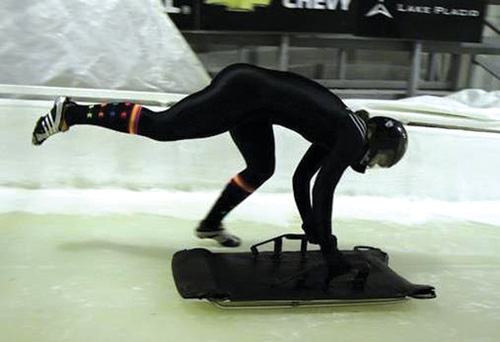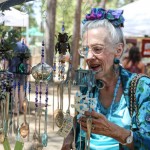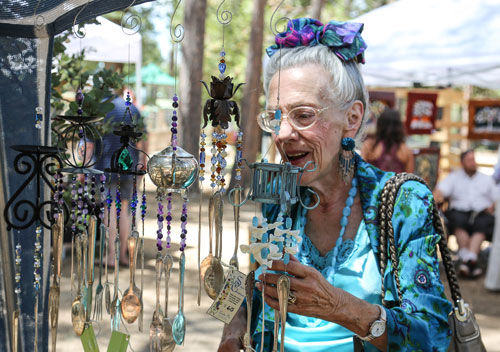
Lauren Salter, 23, is an athlete. While most of us walk around every day oblivious of our skeleton, Salter spends hours every day preparing to use and to risk her skeleton.
She is one of the nation’s top developing skeleton athletes. The skeleton, luge and bobsled are three winter sports where competitors ride a sled down a mile-long ice track. The walls are ice too. All three sports involve skill, strength and speed.
Skeleton is a solo sport and racers lie face down and face forward on the sled. The luge competitors ride the sled feet first on their backs and only get a push start. Skeleton racers begin with a running start, which plays to Salter’s advantage as a former track athlete. The bobsled involves a team of either two or four riders, who use a running start, have the ability to steer the sled and to brake it.
Skeleton riders can achieve speeds of 70 to 80 miles per hour. Bobsled and skeleton races are timed to the nearest one-hundredth of a second.
Exhilarating? Yes. Also extremely dangerous? Yes. There is no steering mechanism on a skeleton sled. The rider steers by shifting weight, leaning with shoulders and legs. Tapping one or both toes changes direction.
Salter, a member of the national development team, is in her second year of training and has already experienced the roller coaster ride that most athletes encounter as they strive for their goals.
Last spring, the Idyllwild native finished her rookie season with confidence and expectations as high as the skeleton run. Her top ten finishes in several late season races created dreams that turned to nightmares this fall.
During the October team trials, Salter’s performance flagged and several others earned the five national team spots. “It did not go well,” she said. “I was using a new sled and new equipment. I was expecting to perform like I left off last year.”
After a short period to lament her disappointment and to face the normal moment of walking away, Salter demonstrated her athletic mien. It was a rough time for her, she said, but the support of her teammates helped her attitude and emotions.
“But I saw it as a unique opportunity to stay and sled on track,” she said with new optimism. “I could work out my problems.”
She went back to the coaches, told them she was there for the long term and asked questions and sought advice on how to regain her form and results.
“The coach said I had to come to terms with the performance. I couldn’t change it, but I could learn from it,” she said. “‘If you can’t, maybe you shouldn’t be here,’ he told me.”
She recognized this was only her second season. In other countries, where the skeleton and luge have longer roots, it is very unusual to make the development team or national team this soon. She also knew she could not walk away and be satisfied, “I love this sport,” she said.
Earlier this month, Salter finished second in the Lake Placid Cup Series, a collection of weekly domestic races.
Describing her runs, Salter said, “I finished the first heat in third place despite a pretty rocky run. I was able to clean a few things up in my second run and kept consistent enough to move up to second after the completion of the race.”
She still has her sights on the Winter Olympics, if not in 2014 in Russia, then she wants to go to Korea as a member of 2018 team.













